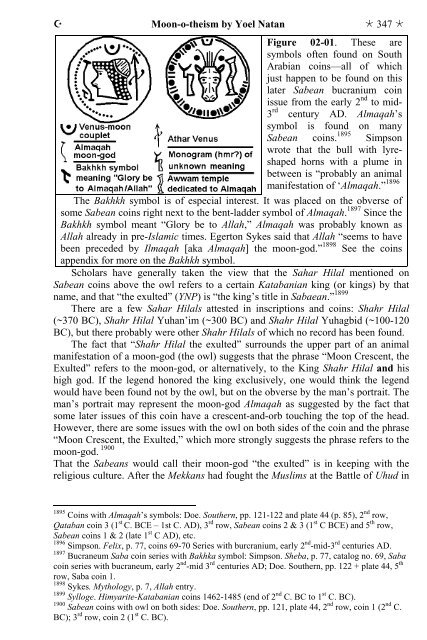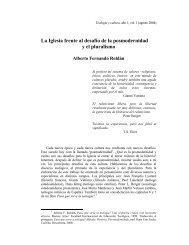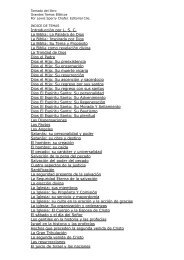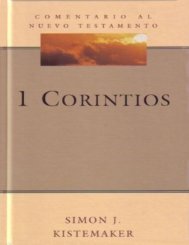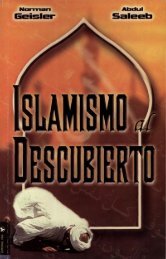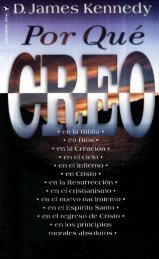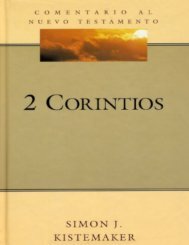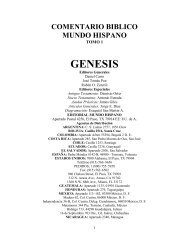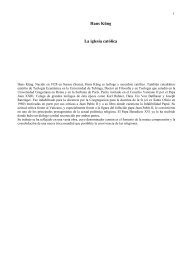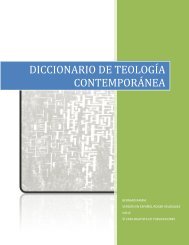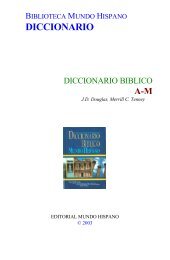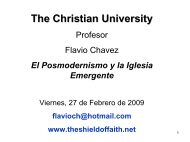Moon-o-theism: Religion of a War- and Moon-god Prophet
Moon-o-theism: Religion of a War- and Moon-god Prophet
Moon-o-theism: Religion of a War- and Moon-god Prophet
- No tags were found...
Create successful ePaper yourself
Turn your PDF publications into a flip-book with our unique Google optimized e-Paper software.
<strong>Moon</strong>-o-<strong>theism</strong> by Yoel Natan 347 Figure 02-01. These aresymbols <strong>of</strong>ten found on SouthArabian coins—all <strong>of</strong> whichjust happen to be found on thislater Sabean bucranium coinissue from the early 2 nd to mid-3 rd century AD. Almaqah’ssymbol is found on manySabean coins. 1895 Simpsonwrote that the bull with lyreshapedhorns with a plume inbetween is “probably an animalmanifestation <strong>of</strong> ‘Almaqah.” 1896The Bakhkh symbol is <strong>of</strong> especial interest. It was placed on the obverse <strong>of</strong>some Sabean coins right next to the bent-ladder symbol <strong>of</strong> Almaqah. 1897 Since theBakhkh symbol meant “Glory be to Allah,” Almaqah was probably known asAllah already in pre-Islamic times. Egerton Sykes said that Allah “seems to havebeen preceded by Ilmaqah [aka Almaqah] the moon-<strong>god</strong>.” 1898 See the coinsappendix for more on the Bakhkh symbol.Scholars have generally taken the view that the Sahar Hilal mentioned onSabean coins above the owl refers to a certain Katabanian king (or kings) by thatname, <strong>and</strong> that “the exulted” (YNP) is “the king’s title in Sabaean.” 1899There are a few Sahar Hilals attested in inscriptions <strong>and</strong> coins: Shahr Hilal(~370 BC), Shahr Hilal Yuhan’im (~300 BC) <strong>and</strong> Shahr Hilal Yuhagbid (~100-120BC), but there probably were other Shahr Hilals <strong>of</strong> which no record has been found.The fact that “Shahr Hilal the exulted” surrounds the upper part <strong>of</strong> an animalmanifestation <strong>of</strong> a moon-<strong>god</strong> (the owl) suggests that the phrase “<strong>Moon</strong> Crescent, theExulted” refers to the moon-<strong>god</strong>, or alternatively, to the King Shahr Hilal <strong>and</strong> hishigh <strong>god</strong>. If the legend honored the king exclusively, one would think the legendwould have been found not by the owl, but on the obverse by the man’s portrait. Theman’s portrait may represent the moon-<strong>god</strong> Almaqah as suggested by the fact thatsome later issues <strong>of</strong> this coin have a crescent-<strong>and</strong>-orb touching the top <strong>of</strong> the head.However, there are some issues with the owl on both sides <strong>of</strong> the coin <strong>and</strong> the phrase“<strong>Moon</strong> Crescent, the Exulted,” which more strongly suggests the phrase refers to themoon-<strong>god</strong>. 1900That the Sabeans would call their moon-<strong>god</strong> “the exulted” is in keeping with thereligious culture. After the Mekkans had fought the Muslims at the Battle <strong>of</strong> Uhud in1895 Coins with Almaqah’s symbols: Doe. Southern, pp. 121-122 <strong>and</strong> plate 44 (p. 85), 2 nd row,Qataban coin 3 (1 st C. BCE – 1st C. AD), 3 rd row, Sabean coins 2 & 3 (1 st C BCE) <strong>and</strong> 5 th row,Sabean coins 1 & 2 (late 1 st C AD), etc.1896 Simpson. Felix, p. 77, coins 69-70 Series with burcranium, early 2 nd -mid-3 rd centuries AD.1897 Bucraneum Saba coin series with Bakhka symbol: Simpson. Sheba, p. 77, catalog no. 69, Sabacoin series with bucraneum, early 2 nd -mid 3 rd centuries AD; Doe. Southern, pp. 122 + plate 44, 5 throw, Saba coin 1.1898 Sykes. Mythology, p. 7, Allah entry.1899 Sylloge. Himyarite-Katabanian coins 1462-1485 (end <strong>of</strong> 2 nd C. BC to 1 st C. BC).1900 Sabean coins with owl on both sides: Doe. Southern, pp. 121, plate 44, 2 nd row, coin 1 (2 nd C.BC); 3 rd row, coin 2 (1 st C. BC).


